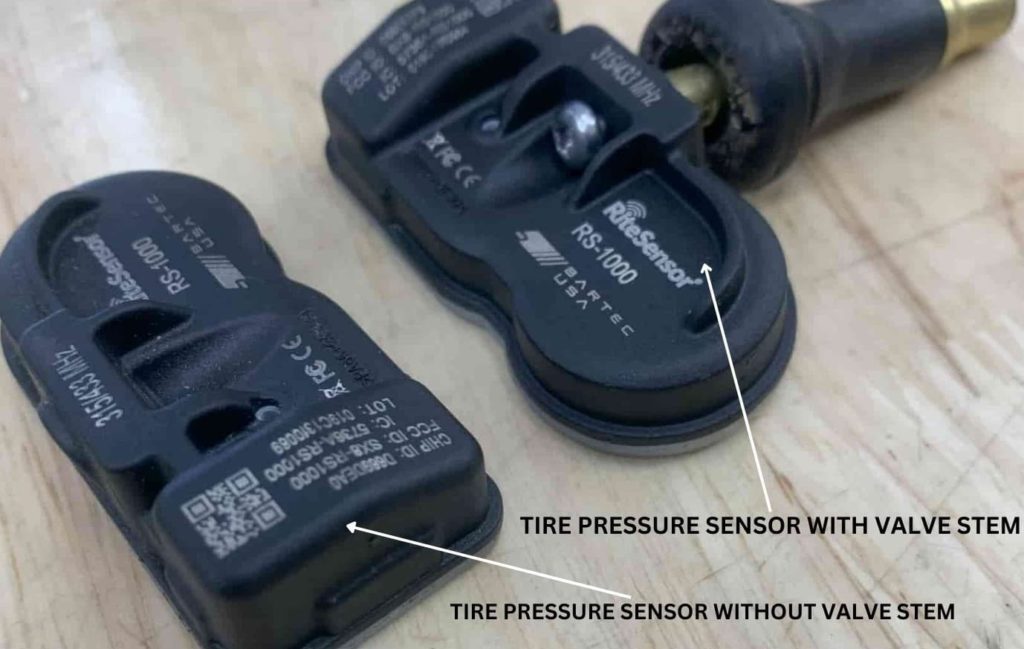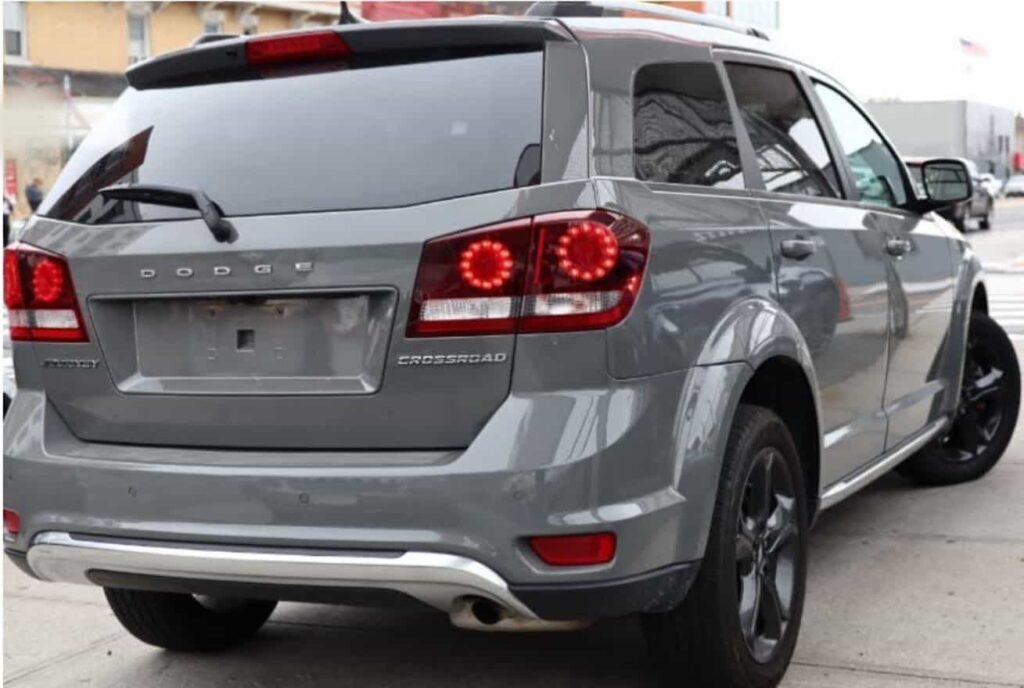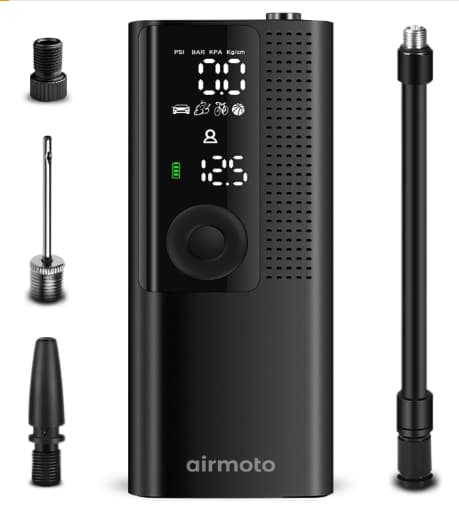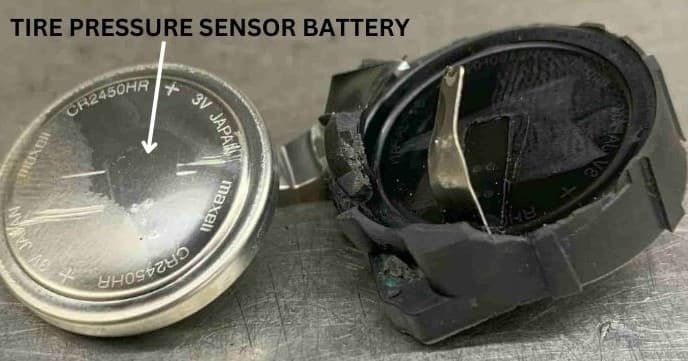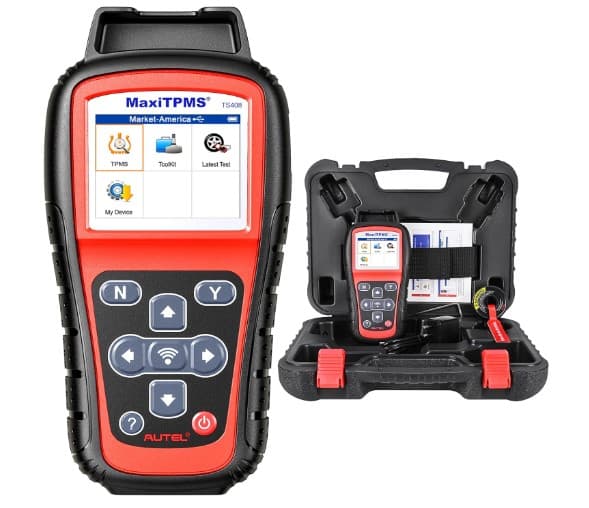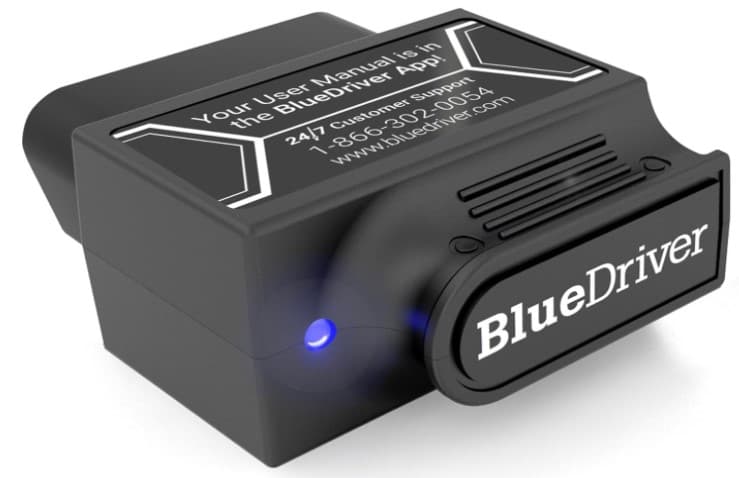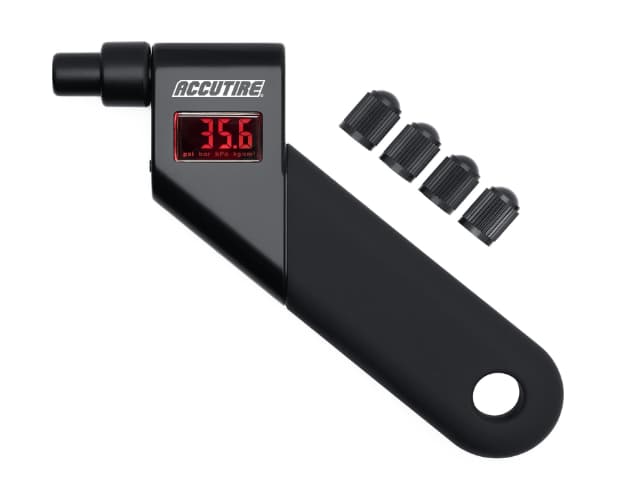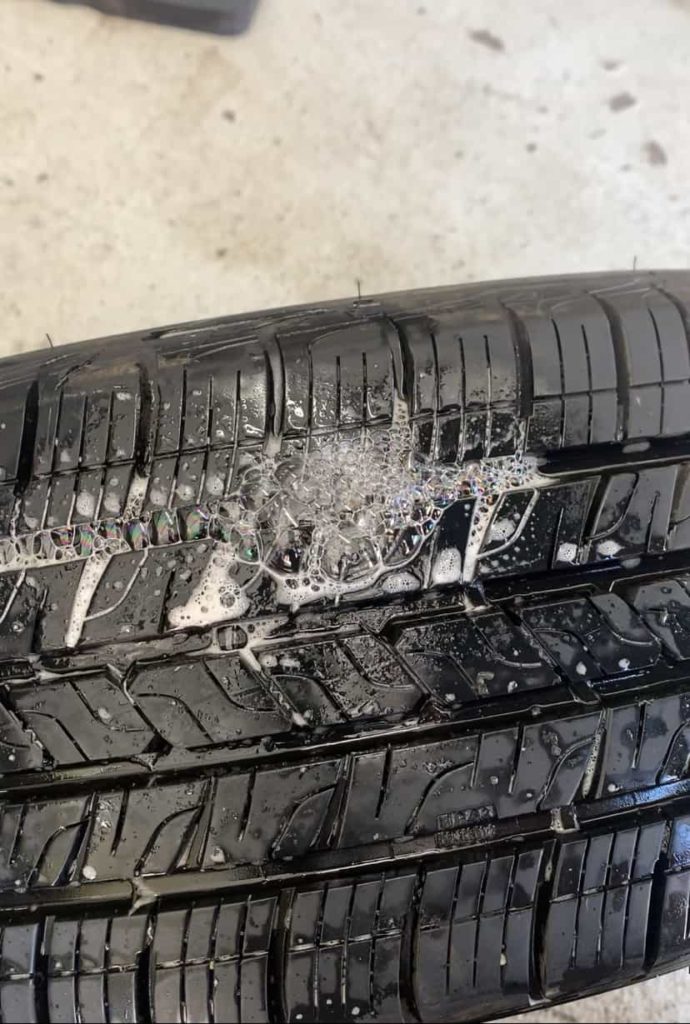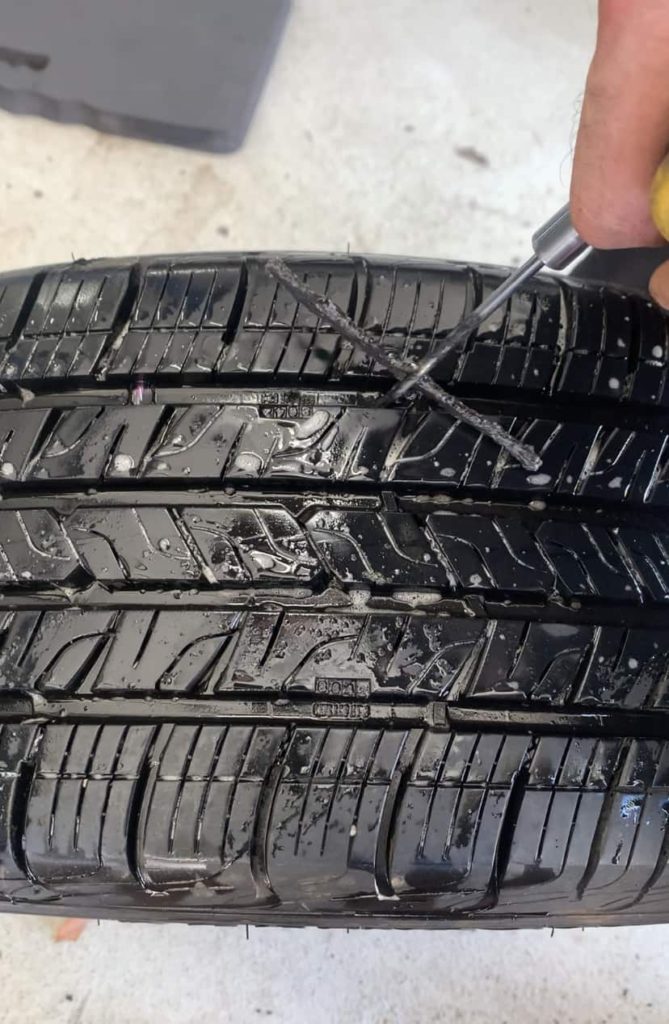What is the Dodge Journey TPMS?
The low tire pressure alert on the Dodge Journey, though it might seem bothersome, plays a pivotal role in maintaining safety while driving. Comprising four key elements, the Dodge Journey’s tire pressure monitoring system (TPMS) seamlessly works to inform the driver of any tire air pressure issues: These include the Tire Pressure Sensors, the TPMS receiver module, the ECM, and the dashboard warning message for low air pressure.
How Does the Dodge Journey TPMS Work?
Sensors in Tires: Constantly measure air pressure and temperature of each tire.
Radio Wave Data Transfer: TPMS Sensors transmit real-time data to the Dodge Journey’s computer.
TPMS Receiver Module: Accepts and processes the tire pressure sensor data.
ECM’s Function: Compares tire pressure data with Dodge Grand Caravan set standards.
Air Pressure Drop Alert: Low tire pressure warning light is a yellow or orange exclamation mark.
TPMS Self-Assessment: The system self-checks and indicates any detected issues by flashing the low tire pressure alert symbol.
Steps to Reset the Dodge Journey Tire Light
Make sure the Dodge Journey tires have cooled, either by not driving or waiting for 3 hours after a drive.
Calibrate the air pressures in each tire to the exact recommended cold levels.
Drive the Dodge Journey for approximately 20 minutes, ensuring you go faster than 15 mph.
Note: The Dodge Journey Does Not Have a Tire Pressure Reset Button!
Steps to Deactivate the Dodge Journey Tire Pressure System
To turn off the Dodge Journey TPMS, ensure all four wheels are replaced with those lacking pressure sensors. After deactivation, tire pressure data will shift to dashes (~) on the display screen.
Mount 4 wheels devoid of TPMS sensors onto the Dodge Journey.
Drive your Dodge Journey for around 20 minutes, maintaining a speed greater than 15 mph (24 km/h).
Once done, the TPMS will emit a chime, with its warning indicator flashing for 75 seconds before remaining constant.
Turn the engine off and then back on.
On all following ignition starts, the TPMS alerts will be absent.
Once TPMS is off, expect tire pressure metrics to show as dashes (~) on your screen.
Steps to Reactivate the Dodge Journey Tire Pressure System
Reinstall the original wheels and tires with the tire pressure sensors in them onto the Dodge Journey.
Drive the Dodge Journey for approximately 20 minutes.
Cycle the engine on and off.
2020 Dodge Journey Tire Pressures
TIRE SIZE | FRONT PSI | REAR PSI |
225/65R17 | 36 | 36 |
225/55R19 | 36 | 36 |
Why is Your Dodge Journey's Tire Pressure Light Illuminated?
Tires with inappropriate air pressure (either too much or too little)
Tires exhibiting air leaks
Lacking pressure sensors in some tires
Inoperative or aged batteries in TPMS sensors
Technical hitches with the TPMS receiver module or Dodge Journey ECM
Interferences from surrounding electromagnetic sources from other cars or electronics
Pressure variations from weather or altitude transitions
Surpassing the vehicle’s recommended load weight
Use of chains on tires
Windows darkened excessively with tints
Temperature variations on roads
Bubbled, dry-rotted, or punctured tires
Off aligned wheels
TPMS governed by defective software
Drastic atmospheric temperature declines
Overlooking TPMS resetting after tire swaps or services
Flawed or damaged tire valves
Dodge Journey Tire Pressure Sensor Batteries
Each Dodge Journey tire features a pressure sensor containing a circuit board, antenna, and a non-replaceable battery. If that battery depletes, you’ll need to replace the entire sensor. Dodge Journey tire sensor batteries last 5 to 10 years or up to 150,000 miles.
6 Tips to Troubleshoot the Dodge Journey Tire Light
Since the Dodge Journey comes without a tire pressure reset feature, addressing the low tire pressure light can involve some experimentation. Among the listed approaches, one should effectively diagnose the Dodge Journey’s tire pressure warning:
SOLUTION 1: IDENTIFY IF A TIRE IS EXPERIENCING AIR LOSS
If you notice one tire less inflated than the others, this typically indicates a leak. To confirm, do the following:
Give the tire a thorough visual assessment and ensure it’s inflated to the recommended cold pressure.
Drive the Dodge Journey, keeping a speed above 15 mph, until the TPMS alert disappears.
🎯 WHAT IT MEANS: If every sensor is in good order and the tires contain the right air quantity, the tire warning light should cease once the Dodge Journey is driven. But, if it disappears and re-emerges while driving, it’s a strong sign of a tire leak.
SOLUTION 2: REBOOTING YOUR DODGE JOURNEY'S ONBOARD COMPUTER
Every low tire pressure alert gets recorded in the Dodge Journey’s onboard computer. To potentially wipe these alerts and deactivate the warning light, you’ll need to reboot the Journey’s computer system. Proceed as follows:
Confirm that the Dodge Journey’s engine and all its power systems are shut off.
Detach the negative terminal from the Journey’s 12 Volt battery.
After waiting about a minute, re-link and fasten the negative terminal to the battery.
Drive for 30 minutes.
🎯 WHAT IT MEANS: Carrying out this routine should extinguish the tire alert. But, if the tire warning comes on again after your drive, it suggests a potential tire leak or an issue with one of the TPMS sensors.
SOLUTION 3: EVALUATING AND TESTING TPMS SENSORS
For a thorough evaluation of each Dodge Journey TPMS sensor, you’ll need a TPMS programming tool or an OBD2 scan tool. The TPMS programming tool facilitates individual assessments of every tire’s pressure sensor. On the other hand, the OBD2 scan tool provides insights into any TPMS discrepancies and identifies tires with communication issues. To use a TPMS programming tool:
Link the tool to the Dodge Journey’s ECM by connecting it to the car’s OBD2 interface.
Comply with the directions provided by the tool and commence the inspection of each TPMS sensor, positioning the tool close to the valve stem on every tire and select the “test” or “trigger” function on the tool.
🎯WHAT IT MEANS: After testing of all tire pressure sensors, the TPMS programming tool will convey its analysis for each. If the tool faces challenges in accessing a sensor, indicates low or drained battery life, or shows irregular readings (like a tire temperature of -112 degrees), that Dodge Journey tire pressure sensor should be swapped out for a new one.
SOLUTION 4: STEP-BY-STEP GUIDE TO TRIGGER A DORMANT TIRE PRESSURE SENSOR
To rejuvenate a tire pressure sensor that’s not active (not due to low battery), execute these actions:
Lower the air pressure in the affected tire by roughly 15-20 Psi.
Fill that tire to 41-42 Psi (5 Psi above the suggested pressure).
Drive your Dodge Journey for approximately 15 minutes.
Once parked, bring the tire’s pressure down to the standard 36 Psi.
🎯WHAT IT MEANS: Should the usual Dodge Journey tire pressure reset process not be effective, give this method a shot.
SOLUTION 5: UNDERSTANDING TEMPERATURES HUGE IMPACT ON TIRE PRESSURE
The influence of temperature on tire pressure is profound. Both the ambient air temperature and the tire’s direct temperature can considerably alter its pressure. A 12-degree fluctuation in the air temperature can result in a change of about 1-2 Psi in tire pressure. For instance, a 70 to 30 degree temperature variation overnight could lead to a decrease in the Dodge Journey’s air pressure by at least 4 Psi, which can set off the low pressure alert. Driving dynamics also play a part; as tires warm up during a drive, their internal pressure increases. This underscores the importance of making tire pressure adjustments when they’re cold, prior to being driven. By grasping the interplay of these temperature factors, it’s evident how the Dodge Journey’s tire pressure alert might get triggered even without any leak.
🎯WHAT IT MEANS: Variations in tire pressure due to temperature changes are natural occurrences. The most effective way to counter this is by calibrating your Dodge Journey tire pressures when they’ve cooled down. Ideally, adjust them at the start of the day before any substantial driving, or after a very short drive. After parking, a span of roughly 3 hours is required for the tires to cool down to a “cold” status.
SOLUTION 6: A PRACTICAL APPROACH TO LOCATING TIRE LEAKS YOURSELF
Having assessed the prior 5 methods, and concluding that your tire does indeed have a leak, here’s how to pinpoint it:
Required Tools: Detergent or soap, a spray container, water, and a tire air pump.
Mix water and soap in the spray container.
Pump up the tire suspected of leaking to at least 36 Psi.
Coat the tire comprehensively using the soap/water mixture.
Carefully scrutinize the Dodge Journey tire for any air bubbles forming.
🎯WHAT IT MEANS: Trace the bubbles to their source, which is the exact location of the leak in the tire.
Common Dodge Journey Tire Pressure Questions
TPMS SENSOR GUIDE FOR TIRE AND WHEEL REPLACEMENTS
When you switch the tires on your Dodge Journey, make sure to carry out the Dodge Journey TPMS reset steps. If you’re updating or changing the Dodge Journey wheels, you have the option to move the factory-installed tire pressure sensors to the replacement wheels or purchase and set up a new set of sensors tailored for the fresh wheels.
HOW CHANGING ALTITUDE IMPACTS YOUR DODGE JOURNEY'S TIRE PRESSURE
The tire pressure of a Dodge Journey isn’t just influenced by temperature; altitude plays a significant role too. As the vehicle climbs, with every increment of 1,000 feet, there’s a reduction in atmospheric pressure by roughly 0.5 psi. This leads to an effective air pressure increase in the tires. To illustrate, traveling from a beach to a height of 7,000 feet can cause the tires of your Dodge Journey to increase their pressure by an estimated 3.0 psi, even if the temperature remains constant.
IS DRIVING THE DODGE JOURNEY WITH THE TIRE LIGHT ILLUMINATED SAFE?
It’s unsafe to continue driving your Dodge Journey when the low tire pressure warning is on. If you notice the tire alert, find a safe spot to pull over and inspect the tires. Look over each tire visually and confirm the air pressure with a manual air pressure gauge. Driving with inadequate tire pressure compromises the safety of the driver, passengers, and also affects the car’s performance and safety features. The Dodge Journey’s tire pressure warning is activated due to either a low tire pressure reading or a faulty tire pressure sensor.
HOW FAR CAN I DRIVE THE DODGE JOURNEY WITH THE LOW TIRE PRESSURE LIGHT ON?
Continuing on the road without understanding the cause of the tire pressure light’s activation can increase the potential danger. There isn’t a defined limit, in terms of miles or time, for which it’s deemed okay to drive with the low tire pressure warning. The moment this alert appears, you should quickly check if it’s triggered by insufficient tire air or a defective tire pressure sensor. Driving the Dodge Journey with diminished tire pressure poses a significant risk. However, having a malfunctioning tire pressure sensor doesn’t inherently affect the car’s safety but does deprive you of precise tire pressure information on the information display.
WHAT DOES IT MEAN WHEN THE DODGE JOURNEY TIRE LIGHT IS FLASHING?
The Dodge Journey is equipped with a tire pressure monitoring system that includes a self-assessment capability. When there’s a communication breakdown between the monitoring system and a tire pressure sensor, this self-assessment function comes into play, also known as a TPMS malfunction. In such scenarios, the indicator for low tire pressure will blink momentarily for around a minute and then remain illuminated. For context, the Dodge Jorney’s spare tire isn’t fitted with a tire pressure sensor. Hence, when the spare tire is in use the TPMS is unable to interface with it due to its absence, leading to a TPMS malfunction. Likewise, a weakened or expired sensor battery can induce a TPMS malfunction.
TIRE PLUG LIMITATIONS
Tire plugs are great for mending punctured tires, but it’s inadvisable to use them on tires with excessively worn-out treads or on the tire’s sidewall.
CAN TIRE SEALANTS COMPROMISE TIRE SENSOR INTEGRITY?
Applying tire sealants such as Slime or Fix-a-Flat to tires has the potential to negatively affect the electronics of a tire pressure sensor. Should you choose to use these products, ensure you get your car to an auto repair shop to have the sensor cleaned and its performance checked.
Everything in this article is applicable to all Dodge Journey models and versions made between 2008-2020.
Please note that this blog post contains Amazon affiliate links. This means that if you make a purchase through one of these links, we at TPMSRESET.COM may earn a small commission at no extra cost to you. We only recommend products that we personally use and believe in. Thank you for supporting us.

